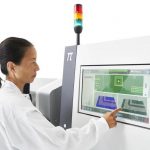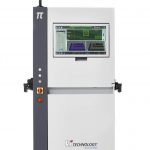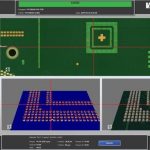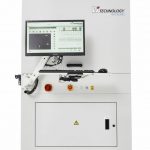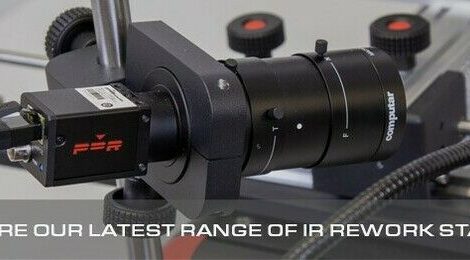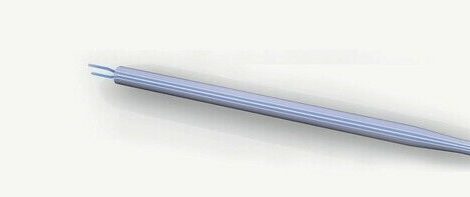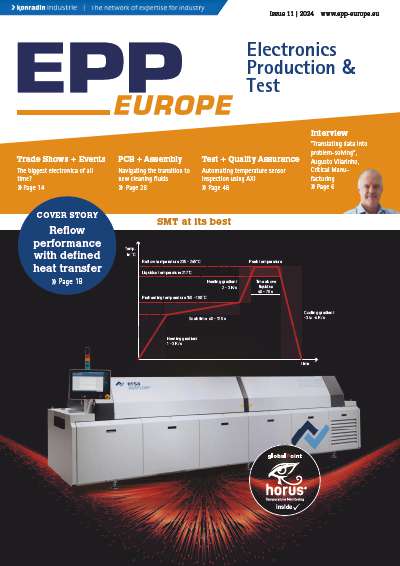Vi Technology’s (Mycronic Group) inspection equipment makes use of advanced machine learning in order to increase process reliability by eliminating potential errors, and to free operators from certain tasks to allow them to focus on the manufacturing process. Machine learning is a field of artificial intelligence (AI) that allows a computer-controlled software or system to make decisions and learn based on the analysis of empirical data from a database or physical sensors.
Ease of use due to machine learning
The revolutionary ergonomics and programming simplicity of the PI 3D SPI series are made possible due to using patented machine learning algorithms. The principle is simple but radical: only the information that the system cannot detect or reconstruct by itself is requested from the operator:
- In order to optimize solder paste detection, the lighting level is automatically adjusted according to the color of the printed circuit board, white or black. In addition, the color and therefore the shape and position of the screen printing are also determined during the programming phase.
- The machine is also able to learn how to recognize glue dots when scanning the first printed circuit board and automatically optimizes its internal parameters accordingly.
- The same applies to the recognition of „skip marks“: the system learns to identify them at the first inspection, regardless of the shape of the sticker or marker trace on subsequent boards.
- The precise “stop” position of the board conveyor, regardless of the geometry or position of the board on the conveyor, is calculated in real time without any operator-managed learning being required.
Measuring height of paste deposits
The R&D team at Vi Technology developed an algorithm to allow the system to learn how to locate the paste deposits, without only relying on the location patterns, which are often insufficient due to the stretch or warpage of the board. Moreover, this algorithm measures precisely and individually the “0” height reference point of each pad. It takes the copper thickness into account, in order to obtain an accurate height measurement of each solder paste deposit.
3D AOI programming assisted by machine learning
Seen at the recent productronica exhibition, the K3D AOI software platform integrates new generation algorithms for programming.
- Auto MatchMaker: When creating an inspection program for a new board, all components available in the library are automatically recognized by the algorithm. Searching manually, one by one, is no longer needed, as the automatic component recognition takes care of it. This shortens the programming time by half.
- Auto Teach: For the addition of a new component in the central library, the machine learning algorithm recognizes the shapes of the body and leads, if any, and creates the reference model for inspection by associating the required AOI tests. This new model is then submitted to the operator for approval before being saved in the central library.
Thanks to this technology, the quality of 3D AOI inspection program is constant and no longer dependent on the skill level of the programmer.
Machine learning guarantees 3D AOI accuracy
Only a system capable of adapting to the measured physical conditions in real time is in a position to meet the challenges of increasing complexity of electronic boards and the miniaturization of components, respecting the takt time of the production line while preserving first pass yield.
The 3D AOI K-series integrates machine learning technology to:
- provide analytical capability: The scan of each board is instantly adjusted to its actual topography, and not to the theoretical or average one. This technical feature can only be achieved when the machine is able to measure the deformation of each board in real time and adapt its behavior independently.
- achieve a first pass yield of 99 %: An ultra-telecentric optical column with a sub-pixel resolution of 4.75 μm in XY-plane feeds the algorithm with accurate input data and images, allowing it to deliver results with a metrological quality. This gives the system a high process stability at pre- or post-reflow inspection, with an optimal test coverage.
- optimize inspection cycle time: During the programming phase, it is necessary to associate re-flattened areas with their components, and to deduce the best inspection path offering the shortest cycle time. Thanks to the POPE algorithm (PCBI Optimal Path Estimation), the machine adapts its behavior according to what it needs to scan and calculates the optimal acquisition path without degrading scanning quality.
Company contact
Vi Technology
Rue de Rochepleine
38120 Saint Egrève, France
Tel.: +33 4 7675 8565
E-Mail: sales.europe@vitechnology.com
Website: www.vitechnology.com




